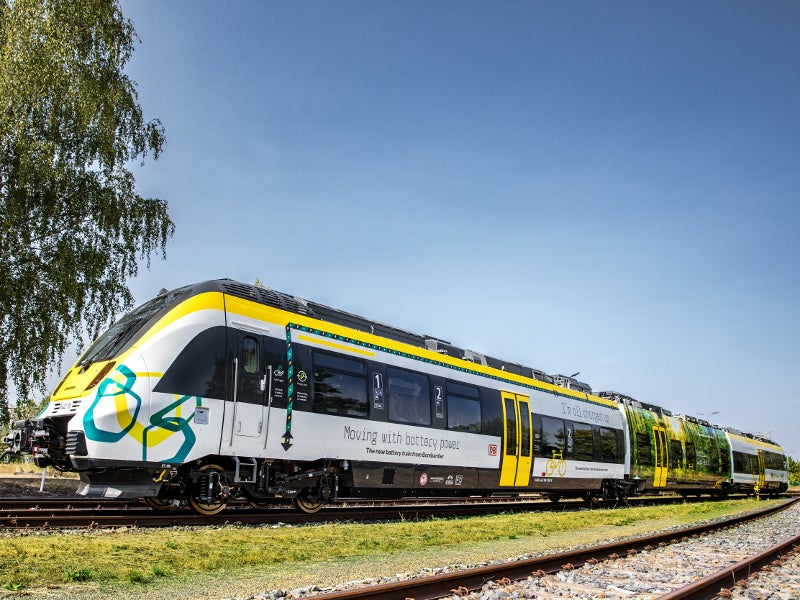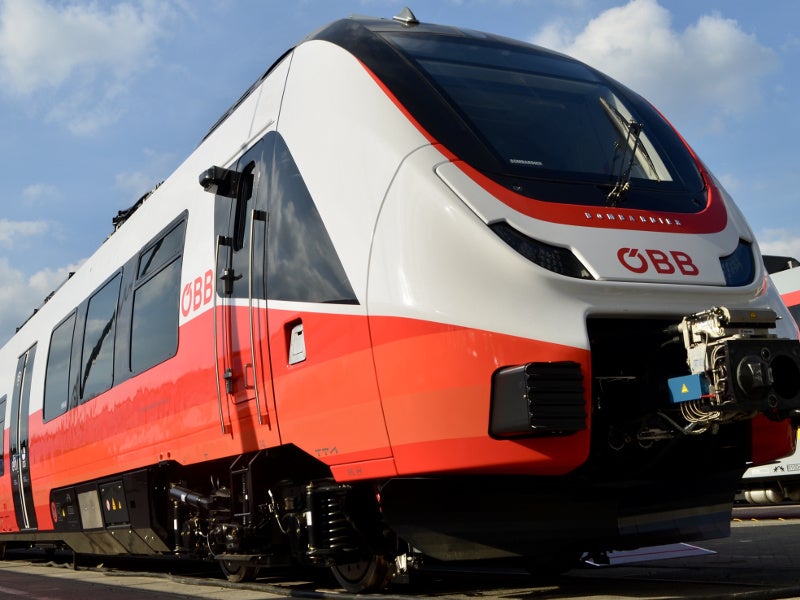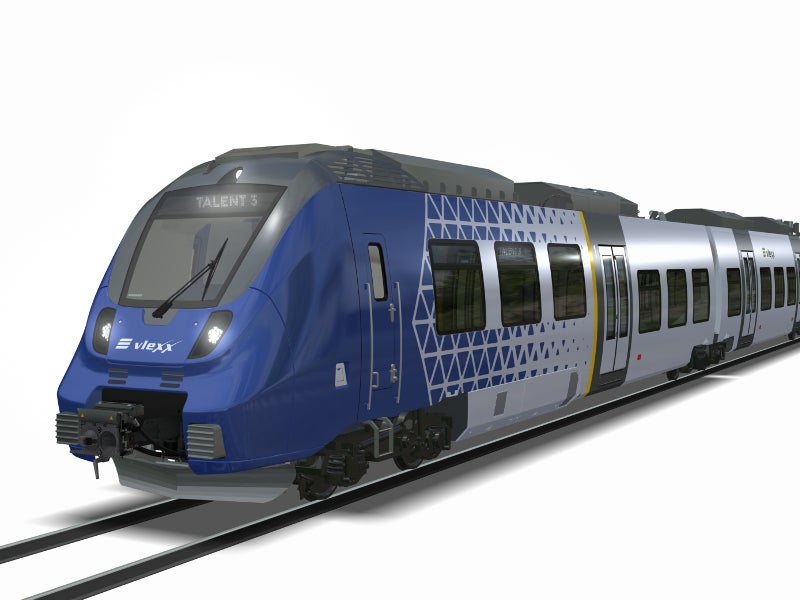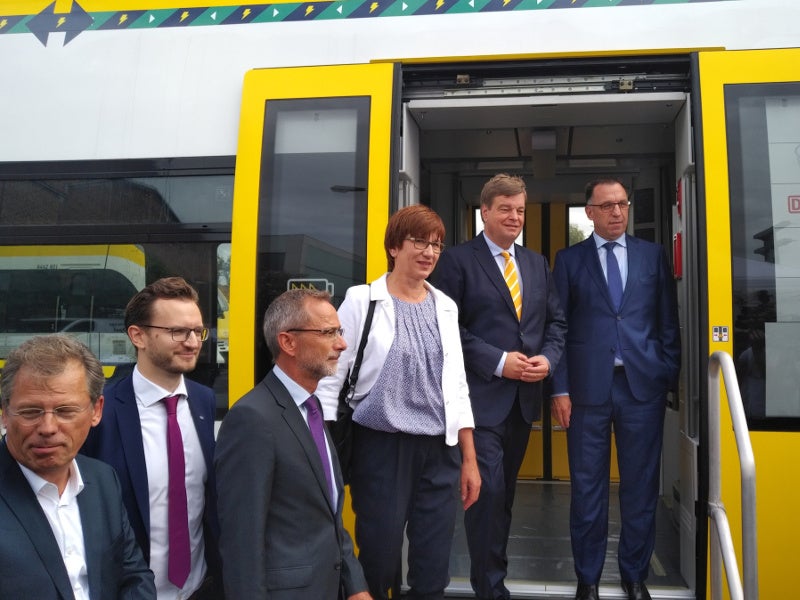Bombardier Talent 3 is a new generation emission-free, battery-powered electric multiple unit (BEMU) manufactured by Bombardier Transportation.
The train is the latest variant of Bombardier’s Talent line that includes the Bombardier Talent and Talent 2. The battery-powered train was unveiled to the public in September 2018 at Bombardier’s Hennigsdorf site. It received the Berlin Brandenburg innovation award in November 2018.
The train is projected to be the first battery-powered train to enter European passenger operations in more than six decades.
Talent 3 BEMU was developed in collaboration with German partners, including DB ZugBus Regionalverkehr Alb-Bodensee, Baden-Wuerttemberg Regional Transport Company, National Organisation for Hydrogen and Fuel Cell Technology, and TU Berlin.
The project received €4m ($4.5m) in funding from Germany’s Federal Ministry of Transport and Digital Infrastructure (BMVI) under an innovation programme for electromobility.
Talent 3 is designed as a cost-effective and environmentally friendly alternative to diesel trains. According to a study conducted by the Technical University of Dresden, the BEMU can outperform diesel trains in terms of operational costs over the entire service life.
Bombardier Talent 3 orders and deliveries
Bombardier agreed to deliver seven Talent 3 trains to Strutture Trasporto Alto Adige (STA) in 2019. The trains will run across South Tyrol and support Italian-Austrian cross-border services. They are part of a framework agreement between the two parties for the provision of up to 32 new trains and 30 years of fleet maintenance services.
German rail transport company Vlexx ordered 21 three-car Bombardier Talent 3 electric multiple units for operations on the Saar region’s electric rail network in March 2017.
Bombardier signed a €1.8bn ($1.9bn) framework agreement with the Austrian Federal Railways (ÖBB) for the delivery of up to 300 Talent 3 trains in 2016. Under the agreement, the company received the two purchase orders in 2016 and 2018 respectively.
Bombardier Talent 3 BEMU design and features
Talent 3 train offers operational flexibility, low energy consumption and reduced lifecycle costs, allowing operators to replace diesel and fuel cell fleet with battery-powered vehicles.
The vehicle has different front designs for the commuter, regional and intercity variants. The multiple units are available in different carriage configurations, including three-car and six-car trainsets depending on customer needs.
At an overall length of 56.2m, the basic Talent 3 BEMU three-car unit can run at a speed of 140km/h with a maximum acceleration of 1.1m/s².
The three-car unit has 169 seats, which includes eight first-class seats. It also provides space for two wheelchairs, nine bicycles, as well as prams, luggage, and winter sports equipment. The six-car variant offers 50% greater seating capacity when compared to the previous generation vehicle. It has three signalling systems and three propulsion systems.
The train features large panoramic windows and a wide body that allows for easy movement of passengers. It is also equipped with a modern passenger information system. The vehicles are designed with sliding steps to reduce the gap between train and platform.
The train offers a range of 100km on non-electrified railway lines.
Bombardier Talent 3 train battery details
Talent 3 is fitted with MITRAC lithium-ion batteries. The batteries allow the trains to operate on more than 30% of the non-electrified lines in Germany.
The batteries can be charged by power from the overhead line while driving on electrified sections. In addition, a provision is available to charge them at stations and via recovered braking energy. Trains operating on non-electrified lines are powered by batteries mounted on the roof.
The batteries support fast-charging, allowing them to be recharged in seven to ten minutes.
Talent 3 BEMU benefits
Talent 3 BEMU’s design characteristics allow for fleet standardisation, new connections and fast recharging, leading to enhanced operability. The system eliminates costs associated with electrification and fuel cell infrastructure.
The battery-powered train also increases ridership as it offers direct connections and reduced travel times.
It is designed to reduce noise levels by up to 7dB and allows additional capsulation of components to enable further noise reduction. Talent 3 BEMU generates 50% less noise when compared to diesel trains.
The ability to operate on both electrified and non-electrified network lines paves the way for new connections with the same fleet. It can operate as a 100% emission-free train and help transit authorities in meeting environmental goals. Talent 3 BEMU releases emissions of 18g of carbon dioxide equivalent per kilometre per seat.






